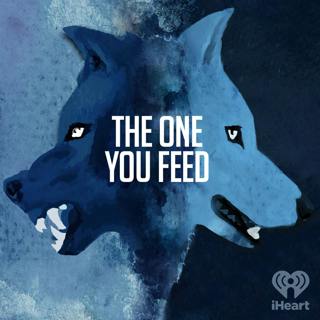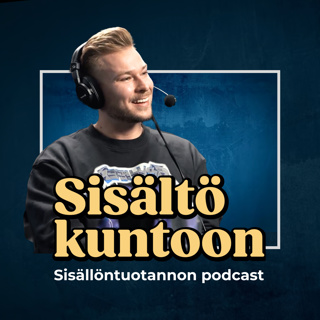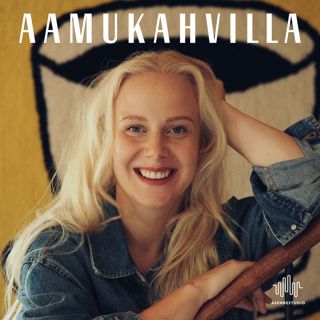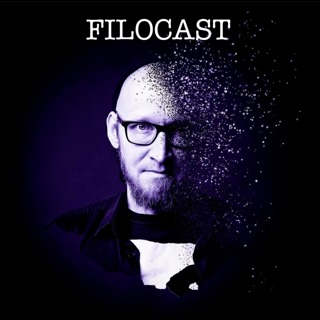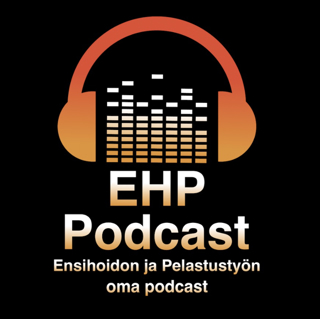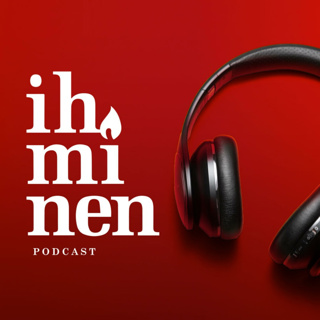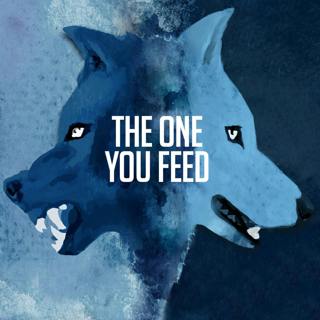
Stephen Guise on How to Form Elastic Habits
Stephen Guise is an international best-selling author, blogger, and entrepreneur. His books have been translated into 17 languages, including his latest book, Elastic Habits: How to Create Smarter Habits That Adapt to Your Day. Eric and Stephen discuss his unique approach to creating good habits that are adaptable to your life and unique circumstances. But wait – there’s more! The episode is not quite over!! We continue the conversation and you can access this exclusive content right in your podcast player feed. Head over to our Patreon page and pledge to donate just $10 a month. It’s that simple and we’ll give you good stuff as a thank you! Stephen Guise and I Discuss How to Form Elastic Habits and… His book, Elastic Habits: How to Create Smarter Habits That Adapt to Your Day How bad habits fulfill some needs An elastic habit is one that creates flexibility and more points of progress How flexibility is strength when it comes to obstacles Lateral flexibility is having several different options to achieve the same goal Vertical flexibility is having the option to move the intensity of the activity up or down The roles of the different levels: mini, plus, and elite How to work with feelings and motivation in establishing habits How to apply the lateral and vertical flexibility to habits Cues or triggers are what prompts you to do the behavior The different types of cues or triggers: time. activity, daily, emotional, and window Intelligent tracking and why it’s important in establishing new habits The process for creating and implementing “elastic” habits Stephen Guise Links: Stephen’s Website Twitter Facebook When you purchase products and/or services from the sponsors of this episode, you help support The One You Feed. Your support is greatly appreciated, thank you! If you enjoyed this conversation with Stephen Guise, you might also enjoy these other episodes: Behavior Change with John Norcross Tiny Habits for Behavior Change with BJ Fogg See omnystudio.com/listener for privacy information. See Privacy Policy at https://art19.com/privacy and California Privacy Notice at https://art19.com/privacy#do-not-sell-my-info. Learn more about your ad choices. Visit megaphone.fm/adchoices
4 Tammi 20221h 1min

James Clear on Compounding Nature of Habits (Part 2)
James Clear is the author of Atomic Habits: An Easy and Proven Way to Build Good Habits and Break Bad Ones. His work has appeared in The New York Times, CBS This Morning, Time, Entrepreneur, and he has taught in colleges around the world. James is also the creator of the Habits Academy, the premier training platform for organizations and individuals that are interested in building better habits in life and work. In Part 2 of this interview, Eric and James discuss more specific ideas and concepts for establishing good habits and eliminating bad habits. If you’d like to make 2022 a better year for you, bring clarity to what matters most, and discover the tools to help you become the person you really want to be, Eric can help you! To book a FREE, no-pressure 30-minute Discovery call to see if working with Eric is right for you, click here. But wait – there’s more! The episode is not quite over!! We continue the conversation and you can access this exclusive content right in your podcast player feed. Head over to our Patreon page and pledge to donate just $10 a month. It’s that simple and we’ll give you good stuff as a thank you! James Clear and I Discuss the Compounding Nature of Habits and… His book, Atomic Habits: An Easy and Proven Way to Build Good Habits and Break Bad Ones Habits are a response to the physical cues in our environment Learning to make it obvious or reduce friction when trying to create good habits Habit stacking and priming your environment for success Clarifying the action: “After _____, I will _____” Getting specific with your actions (when, where) How social environment affects the attractiveness of habits Making habits easy and convenient The two-minute rule for establishing good habits A habit must be established before it can be improved Optimize for the starting line rather than the finish line Make it satisfying – how positive emotions cultivate good habits and negative emotions destroy them Bring the long-term consequences into the short term Reinforcing your identity by your actions James Clear Links: James’s Website Twitter Instagram If you enjoyed this conversation with James Clear, you might also enjoy these other episodes: James Clear (2015) Tiny Habits for Behavior Change with BJ Fogg See omnystudio.com/listener for privacy information. See Privacy Policy at https://art19.com/privacy and California Privacy Notice at https://art19.com/privacy#do-not-sell-my-info. Learn more about your ad choices. Visit megaphone.fm/adchoices
31 Joulu 202137min

James Clear on Compounding Nature of Habits (Part 1)
James Clear is the author of Atomic Habits: An Easy and Proven Way to Build Good Habits and Break Bad Ones. His work has appeared in The New York Times, CBS This Morning, Time, Entrepreneur, and he has taught in colleges around the world. James is also the creator of the Habits Academy, the premier training platform for organizations and individuals that are interested in building better habits in life and work. In Part 1 of the interview, Eric and James discuss habits and how to set yourself up for short and long-term success when it comes to behavior change. If you’d like to make 2022 a better year for you, bring clarity to what matters most, and discover the tools to help you become the person you really want to be, Eric can help you! To book a FREE, no-pressure 30-minute Discovery call to see if working with Eric is right for you, click here. But wait – there’s more! The episode is not quite over!! We continue the conversation and you can access this exclusive content right in your podcast player feed. Head over to our Patreon page and pledge to donate just $10 a month. It’s that simple and we’ll give you good stuff as a thank you! James Clear and I Discuss the Compounding Nature of Habits and… His book, Atomic Habits: An Easy and Proven Way to Build Good Habits and Break Bad Ones How habits are like the compound interest of self-improvement Your outcomes are a lagging measure of your efforts How bamboo growth is like habit growth The importance of building a foundation of habits to see results How work isn’t wasted, it’s stored Focusing on systems rather than goals How the outcome is a natural consequence of habits How goals can create an artificial finish line The role of identity in behavior change How you choose to act leads to the kind of person you want to be Learning to adopt a growth mindset as opposed to a fixed mindset How humans are learning machines The 4 stages of habits: cue, craving, response, and reward The 4 laws of behavior change: make it obvious, attractive, easy, and satisfying To break a bad habit, invert the 4 laws of behavior change James Clear Links: James’s Website Twitter Instagram Calm App: The app designed to help you ease stress and get the best sleep of your life through meditations and sleep stories. Join the 85 million people around the world who use Calm to get better sleep. Get 40% off a Calm Premium Subscription (a limited time offer!) by going to www.calm.com/wolf If you enjoyed this conversation with James Clear, you might also enjoy these other episodes: James Clear (2015) Tiny Habits for Behavior Change with BJ Fogg See omnystudio.com/listener for privacy information. See Privacy Policy at https://art19.com/privacy and California Privacy Notice at https://art19.com/privacy#do-not-sell-my-info. Learn more about your ad choices. Visit megaphone.fm/adchoices
28 Joulu 202142min

John Zeratsky on How to Make Time for What Matters
John Zeratsky was a designer in the tech industry and became obsessed with the idea of re-designing time. He’s also the author of multiple books and his work has been published in The Wall Street Journal, Time, Harvard Business Review, Wired, Fast Company, and many others. In this episode, Eric and John discuss his book, Make Time: How to Focus on What Matters Every Day If you'd like to make 2022 a better year for you, bring clarity to what matters most, and discover the tools to help you become the person you really want to be, Eric can help you! To book a FREE, no-pressure 30-minute Discovery call to see if working with Eric is right for you, click here. But wait – there’s more! The episode is not quite over!! We continue the conversation and you can access this exclusive content right in your podcast player feed. Head over to our Patreon page and pledge to donate just $10 a month. It’s that simple and we’ll give you good stuff as a thank you! John Zeratsky and I Discuss How to Make Time for What Matters and… His book, Make Time: How to Focus on What Matters Every Day Understanding the limits of will-power Setting up our environment so it’s easier to make the right decisions The two powerful forces that compete every day for our time “The Busy Bandwagon” and the feeling you’re not in control of our time “The Infinity Pools” of neverending options of distractions Questioning the “defaults” in our lives and finding ways to change our behavior Creating a highlight for everyday Structuring your day around your “highlight” Finding more meaningful moments Taking back control of your time and energy Creating barriers to distraction The fundamentals of managing your energy The importance of focusing on the process, not the outcome Becoming aware of how our interaction with technology makes us feel John Zeratsky Links: John’s Website Twitter If you enjoyed this conversation with John Zeratsky, you might also enjoy these other episodes: Time Management for Mortals with Oliver Burkeman Being a Procrastinator with Tim Pychyl See omnystudio.com/listener for privacy information. See Privacy Policy at https://art19.com/privacy and California Privacy Notice at https://art19.com/privacy#do-not-sell-my-info. Learn more about your ad choices. Visit megaphone.fm/adchoices
24 Joulu 202155min

Charlie Gilkey on How to Get Things Done
Charlie Gilkey is the author of Start Finishing: How To Go From Idea To Done. An Army veteran and near Ph.D. in philosophy, Charlie is the founder of Productive Flourishing, a company that helps professional creatives, leaders, and change-makers take meaningful action on work matters. He’s widely cited in outlets such as Inc. Magazine, Time, Forbes, The Guardian, Life Hacker, and more and his work will help you discover the path from the ideas in your head to the actions you take in your daily life and how to go about getting things done. But wait – there’s more! The episode is not quite over!! We continue the conversation and you can access this exclusive content right in your podcast player feed. Head over to our Patreon page and pledge to donate just $10 a month. It’s that simple and we’ll give you good stuff as a thank you! Charlie Gilkey and I Discuss How to Get Things Done and… His book, Start Finishing: How To Go From Idea To Done How kindness towards others often brings out the best in everyone The Tao Te Ching Focusing on your input and letting go of the results We don’t just improve by thinking about things, we improve by doing them Creative constipation breeds toxicity We’re either creating something or destroying something We don’t do ideas, we do projects How doing our best work is often really hard The myth: if it’s meant to be for us, it’s supposed to be easy The myth that if it doesn’t come easy for you, you shouldn’t do it Doing something until you’re good enough at it to decide whether or not you want to continue doing it The 5 things that get in the way of doing our best work Head Trash: Doesn’t matter if a thought is true or not – it matters if we believe it or not The problem with automatically believing our thoughts How discipline limits decision fatigue How action expresses priority Charlie Gilkey Links: Charlie’s Website Instagram Twitter Facebook Upstart: The fast and easy way to get a personal loan to consolidate, lower your interest rate, and pay off your debt. Go to www.upstart.com/wolf If you enjoyed this conversation with Charlie Gilkey, you might also enjoy these other episodes: Chris Bailey on Focus, Productivity, and Meditation David Kadavy on Getting Started See omnystudio.com/listener for privacy information. See Privacy Policy at https://art19.com/privacy and California Privacy Notice at https://art19.com/privacy#do-not-sell-my-info. Learn more about your ad choices. Visit megaphone.fm/adchoices
21 Joulu 202153min

Arthur Brooks on What It Takes to Find Happiness
Arthur Brooks is a bestselling author, social scientist, and the President of the American Enterprise Institute. He teaches Leadership and Happiness at the Harvard School of Business. In this episode, Eric and Arthur discuss happiness as well as his book, Love Your Enemies: How Decent People Can Save America From the Culture of Contempt. But wait – there’s more! The episode is not quite over!! We continue the conversation and you can access this exclusive content right in your podcast player feed. Head over to our Patreon page and pledge to donate just $10 a month. It’s that simple and we’ll give you good stuff as a thank you! Arthur Brooks and I Discuss What It Takes to Find Happiness and… His book, Love Your Enemies: How Decent People Can Save America From the Culture of Contempt The four extrinsic things that feed off fear are money, power, pleasure, and fame The four intrinsic things that feed off love are faith, family, friendships, and meaningful work How happiness requires meaning and having meaning requires challenge and/or difficulty The three aspects of meaning are coherence, purpose, and significance How writing out the thing you learned from a bad experience can bring meaning to it Learning to find significance in the small things How we need to stop living in the future and appreciate being in the present The freeing idea that nobody really cares like we think they do The more you judge others, the more you will feel judged The therapy for feeling insecure is to stop judging and start observing The link between humor and happiness How we should reject grimness Rejecting the expectations of the holidays can lead to more happiness Arthur Brooks Links: Arthur’s Website Instagram Twitter Facebook Novo Nordisk - Explore the science behind weight loss and partner with your healthcare provider for a healthy approach to your weight management. To learn more, visit truthaboutweight.com If you enjoyed this conversation with Arthur Brooks, you might also enjoy these other episodes: Jonathan Rauch – The Happiness Curve Ruth Whippman on The Complexity of Happiness See omnystudio.com/listener for privacy information. See Privacy Policy at https://art19.com/privacy and California Privacy Notice at https://art19.com/privacy#do-not-sell-my-info. Learn more about your ad choices. Visit megaphone.fm/adchoices
17 Joulu 202148min

Dr. Jill Bolte Taylor and John Britton on Right Brain Injury vs. Left Brain Injury
Dr. Jill Bolte Taylor is a Harvard-trained and published neuroanatomist. In 1996, Jill experienced a severe hemorrhage in the left hemisphere of her brain, causing her to lose the ability to walk, talk, read, write, or recall any of her life. John Britton is a former anesthesiologist who suffered a right brain injury leaving him with only his left brain to function. After hearing Jill’s previous episode on this show, John contacted Eric and they thought it would be interesting to host a conversation with John and Dr. Bolte Taylor to discuss their respective experiences. In this episode, Jill, John, Ginny, and Eric talk about what it’s like to experience the world through your right brain vs. your left brain and how they come together to make for whole-brain living. But wait – there’s more! The episode is not quite over!! We continue the conversation and you can access this exclusive content right in your podcast player feed. Head over to our Patreon page and pledge to donate just $10 a month. It’s that simple and we’ll give you good stuff as a thank you! Dr. Jill Bolte Taylor, John Britton, and I Discuss Right Brain Injury vs Left Brain Injury and… The functions of and interaction between the right and left hemispheres of the brain How the left brain governs past and future, me the individual, details, boundaries, language That the right brain governs the present, the “we” collective, connections, expansive, and openness The way the two hemispheres of our brain interact with one another in a healthy brain How John experienced the world before, during, and after his right brain injury The most helpful rehabilitation approach for John post his injury Dr. Jill Bolte Taylor’s experience of her left hemisphere traumatic brain injury and her recovery story Dr. Jill Bolte Taylor Links: Dr. Jill Bolte Taylor’s Website Twitter Facebook Calm App: The app designed to help you ease stress and get the best sleep of your life through meditations and sleep stories. Join the 85 million people around the world who use Calm to get better sleep. Get 40% off a Calm Premium Subscription (a limited time offer!) by going to www.calm.com/wolf Talkspace is the online therapy company that lets you connect with a licensed therapist from anywhere at any time at a fraction of the cost of traditional therapy. It’s therapy on demand. Visit www.talkspace.com or download the app and enter Promo Code: WOLF to get $100 off your first month. If you enjoyed this conversation with Dr. Jill Bolte Taylor and John Britton, you might also enjoy these other episodes: Whole Brain Living with Dr. Jill Bolte Taylor The Divided Yet Connected Brain with Iain McGilchrist Lessons About the Brain with Lisa Feldman Barrett See omnystudio.com/listener for privacy information. See Privacy Policy at https://art19.com/privacy and California Privacy Notice at https://art19.com/privacy#do-not-sell-my-info. Learn more about your ad choices. Visit megaphone.fm/adchoices
14 Joulu 202156min

Ethan Kross on How to Harness the Chatter in Your Head
Ethan Kross is one of the world’s leading experts on controlling the conscious mind. He is an award-winning professor at the University of Michigan and the Ross School of Business and also the Director of the Emotion & Self Control Laboratory. In addition to countless television appearances, Ethan’s research has been featured in the New York Times, the Wall Street Journal, USA Today, and many others. In this episode, Ethan and Eric talk about his book, Chatter: The Voice in Our Head, Why it Matters, and How to Harness It. But wait – there’s more! The episode is not quite over!! We continue the conversation and you can access this exclusive content right in your podcast player feed. Head over to our Patreon page and pledge to donate just $10 a month. It’s that simple and we’ll give you good stuff as a thank you! Ethan Kross and I Discuss How to Harness the Chatter in Our Head and… His book, Chatter: The Voice in Our Head, Why it Matters, and How to Harness It How we have both emotional and cognitive needs when dealing with the “chatter” in our heads Common triggers for internal chatter are uncertainty and lack of control The three main categories of tools to work with chatter Learning to zoom out and broaden our perspective Distance self-talk is talking to yourself like you’d talk to another person Temporal distancing (mental time travel) Expressive writing about negative experiences Using your imagination to replay a past experience to gain objectivity Harnessing our internal chatter rather than silencing it How to think about thinking and what we can and cannot control Being aware of how easy some of these tools are to implement Creating if/then plans increases the likelihood you’ll remember to use the tools Environmental tools and the benefits of getting outside in nature How cleaning and organizing our physical space impacts our mental state Ethan Kross Links: Ethan’s Website Twitter Instagram Novo Nordisk – Explore the science behind weight loss and partner with your healthcare provider for a healthy approach to your weight management. If you enjoyed this conversation with Ethan Kross, you might also enjoy these other episodes: Overthinking and Internal Soundtracks with Jon Acuff Scott Gornto See omnystudio.com/listener for privacy information. See Privacy Policy at https://art19.com/privacy and California Privacy Notice at https://art19.com/privacy#do-not-sell-my-info. Learn more about your ad choices. Visit megaphone.fm/adchoices
10 Joulu 202156min
